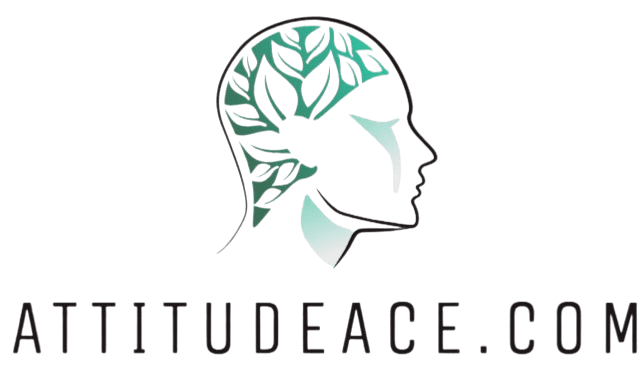Transforming Setbacks into Comebacks: A Success Guide
Life often presents you with unexpected challenges that can feel both discouraging and overwhelming. Whether these hurdles arise in your personal life, career, or emotional well-being, setbacks are a common thread in the human experience.
The silver lining? These challenges can act as powerful catalysts for growth and transformation.
This article delves into the essence of setbacks, discovering the different ways they can show up in our lives. It also offers practical steps to turn these obstacles into opportunities for success, along with valuable resources to support you on your journey.
Embrace the potential for transformation and uncover the secret to turning your setbacks into remarkable comebacks.
Contents
- Key Takeaways:
- Understanding Setbacks
- Common Types of Setbacks
- The Power of Perspective
- Steps to Transform Setbacks into Comebacks
- Support and Resources for Overcoming Setbacks
- Frequently Asked Questions
- What does it mean to “transform setbacks into comebacks”?
- How can I transform my setbacks into comebacks?
- Why is it important to learn how to transform setbacks into comebacks?
- Can anyone learn how to transform setbacks into comebacks?
- What are some real-life examples of transforming setbacks into comebacks?
- How can transforming setbacks into comebacks lead to success?
Key Takeaways:

- Setbacks are part of life. Embrace them as chances to learn!
- Change your view to find the lessons hidden in setbacks.
- Make a clear plan and seek help to turn setbacks into comebacks.
Understanding Setbacks
Understanding setbacks is essential in your personal and professional journey. They offer invaluable learning opportunities for remarkable comebacks.
These setbacks challenge your ability to bounce back and prompt you to reassess your long-term vision while honing your skills in understanding your feelings and those of others.
By embracing reality and cultivating a resilient mindset, you can transform these obstacles into stepping stones for growth. Maintaining clear communication is crucial in navigating through setbacks, allowing you to celebrate small victories along the way.
Defining Setbacks and Their Impact
Setbacks can be defined as unexpected challenges that hinder your progress, impacting both your emotional and psychological states and ultimately influencing your personal growth.
These interruptions often evoke feelings of frustration, disappointment, or even despair, leading you to question your abilities and decisions. However, such experiences can also present valuable opportunities for learning and self-reflection.
By viewing setbacks as stepping stones rather than obstacles, you can foster resilience and adaptability. The journey through adversity often compels you to enhance your ability to understand and manage emotions, both your own and those of others.
This heightened awareness can be instrumental in navigating future challenges, paving the way for enriched personal development.
Common Types of Setbacks
Setbacks often fall into three primary categories: personal, professional, and emotional. Each type demands a tailored approach to build resilience and facilitate a successful comeback.
Recognizing these distinctions is key to navigating challenges effectively and emerging stronger than before.
Personal, Professional, and Emotional Setbacks
Personal, professional, and emotional setbacks can take many forms, from the heartache of failed relationships to the shock of job loss. Each one prompts you to seek effective solutions and support systems.
Imagine a talented individual who suddenly finds themselves without a job due to unforeseen circumstances like an economic downturn or company restructuring. This professional setback doesn t just bring financial strain; it can also stir up feelings of inadequacy.
In such moments, it s essential to tap into your support network whether that s friends, family, or professional mentors to help rebuild your self-esteem and explore new opportunities.
Emotional setbacks often creep in from personal relationships that stumble. By nurturing open communication and surrounding yourself with a loyal community, you can navigate the painful journey of healing and rediscovery.
Engaging in collaborative experiences can also bolster your resilience, as teamwork brings fresh perspectives and collective strength to help you conquer adversity.
The Power of Perspective

The power of perspective is essential in your journey to navigate setbacks. By shifting your mindset and reframing obstacles, you can cultivate a more resilient approach to the challenges that come your way.
Shifting Mindsets and Reframing Setbacks
Shifting your mindset and reframing setbacks is about changing how you perceive challenges. Transforming them into valuable opportunities for personal growth and development is key.
You can achieve this transformation by using techniques like cognitive reframing, the practice of changing your thinking to see challenges in a better light. Coupled with this is the power of positive self-talk; fostering an internal dialogue that highlights your strengths and potential cultivates a resilient approach to adversity.
Emotional intelligence plays a significant role in this journey. It equips you to understand and manage your emotions, enhancing your empathy and improving your responses to stressors. Together, these strategies create a powerful blend that fosters resilience, allowing you to navigate challenges with a more adaptable and optimistic outlook.
Steps to Transform Setbacks into Comebacks
Transforming setbacks into comebacks demands a step-by-step method. Begin by recognizing the learning opportunities that arise from challenges.
Take decisive action based on those insights and cultivate a long-term vision for your success. This strategic mindset gives you the power to navigate obstacles with resilience and purpose, ultimately leading to remarkable achievements.
Identifying Lessons and Opportunities
Identifying lessons and opportunities from setbacks is crucial for your personal growth. It enables you to tap into your support systems for guidance and motivation.
Reflecting on these challenges can transform obstacles into stepping stones, fostering resilience and enhancing your self-awareness.
Engaging in open dialogues with friends or mentors offers fresh perspectives. This helps you understand what went wrong and how to improve. This collaborative reflection ensures that exploring your feelings surrounding setbacks yields actionable insights rather than lingering doubts.
By actively seeking advice and sharing your experiences, you cultivate a sense of belonging and encouragement, essential for turning hardships into valuable opportunities for growth and development.
Creating a Plan for Moving Forward
Creating a plan for moving forward requires you to take decisive action, make strategic pivots, and cultivate a long-term vision that embraces continuous improvement.
You ll want to pinpoint specific, achievable goals that will guide your recovery journey! For example, if you’re navigating financial difficulties, analyze your expenditures and realign your budget to prioritize essential operations while cutting unnecessary costs.
Setting short-term targets, like aiming to boost sales by a certain percentage within a quarter, can generate momentum. Incorporating long-term goals helps you stay focused on sustainability and resilience, allowing you to adapt to shifts in the market or your personal circumstances.
Consider a tech startup that shifts its focus from a saturated product line to a niche service. This strategic pivot illustrates how embracing change can lead to renewed growth and stability.
Support and Resources for Overcoming Setbacks

Support and resources are essential for navigating setbacks. They offer you a solid framework to seek professional guidance and assistance. They also cultivate teamwork and enhance emotional intelligence, empowering you to rise above challenges with confidence and resilience.
Start your journey today! Reflect on a recent setback and write down what you learned.
Building a Support System
Building a robust support system means building relationships that focus on teamwork and understanding emotions, creating a safety net for you during challenging times.
By actively nurturing these connections, you can gain valuable insights and encouragement from those around you. Your social networks become powerful resources, enabling you to share experiences and strategies that pave the way for personal and professional growth.
Mentorship can truly change the game for you! Guidance from experienced peers helps you navigate complexities and boosts your confidence. Collaborative efforts foster innovation and problem-solving, allowing everyone involved to tap into diverse perspectives and skills.
As you strengthen these connections, you’ll find yourself better equipped to tackle obstacles, reinforcing the notion that you don t have to face challenges alone.
Seeking Professional Help and Guidance
Seeking professional help and guidance is a proactive step you can take to overcome challenges, allowing you to tap into expert resources and enhance your emotional intelligence. This approach not only fosters resilience but also opens the door to a wealth of knowledge that can lead to significant personal transformation.
By engaging with therapists, you can delve deep into your emotions and thought patterns, gaining insights that facilitate healing. Coaching offers a goal-oriented framework, enabling you to channel your strengths toward achieving both personal and professional aspirations.
Workshops provide communal learning experiences, where you can share struggles and strategies, creating a supportive environment among peers.
These different types of help are invaluable in navigating setbacks and fostering long-term growth, giving you the power to thrive in all areas of your life.
Frequently Asked Questions
-
What does it mean to “transform setbacks into comebacks”?
Transforming setbacks into comebacks refers to the process of turning negative experiences or failures into positive outcomes and success. It involves learning from setbacks and using them as motivation to come back stronger and achieve success.
-
How can I transform my setbacks into comebacks?
There are several steps to transforming setbacks into comebacks, including acknowledging and accepting the setback, reflecting on what went wrong, learning from the experience, and taking action to move forward and achieve success.
-
Why is it important to learn how to transform setbacks into comebacks?
Learning how to transform setbacks into comebacks is crucial for personal and professional growth. It helps develop resilience, determination, and the ability to bounce back from failures. It also allows for a positive mindset and the ability to turn challenges into opportunities.
-
Can anyone learn how to transform setbacks into comebacks?
Yes, anyone can learn how to transform setbacks into comebacks. It’s a skill that can be developed through practice and determination. It may come more naturally to some, but with the right mindset and strategies, anyone can turn setbacks into comebacks.
-
What are some real-life examples of transforming setbacks into comebacks?
There are many examples of individuals, businesses, and organizations that have successfully transformed setbacks into comebacks. For example, Walt Disney was fired from a newspaper for lacking imagination and went on to create one of the most successful animation companies. Another example is Oprah Winfrey, who was told she wasn’t fit for television but persevered and became a successful TV host and producer.
-
How can transforming setbacks into comebacks lead to success?
Transforming setbacks into comebacks can lead to success by teaching valuable lessons, fostering resilience and determination, and providing opportunities for growth and development. It also allows one to view setbacks as temporary and not defining, leading to a more positive and determined mindset, which is essential for success.
Don’t wait any longer to start transforming your challenges into victories! Share your own stories or seek professional help to take the first step toward your comeback.







